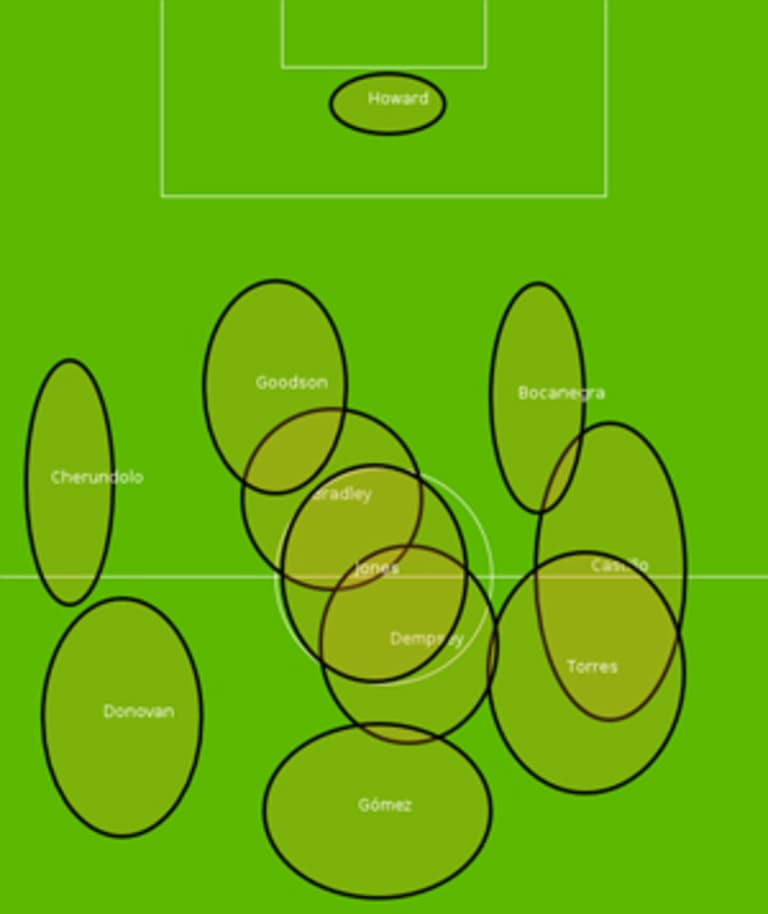If you were to ask just about any fan that watched the United States square off against Brazil and Canada, they would tell you that Jurgen Klinsmann's side played considerably better in their 4-1 loss to the Brazilians than they did in the scoreless draw against the Canadians. And you'll get no argument on that point here.
At first glance, though, the statistics between these two games don't seem to tell the same story. At BMO Field in Toronto, the Americans out-possessed the Canadians 62 percent to 38 percent, completed 584 passes to the hosts' 358, completed 84 percent of their attempted passes in comparison to Canada's 78 percent and attempted more shots on target.
In the match against Brazil, which concluded along a pretty lopsided final scoreline, the Americans had 48.2 percent of possession and only 337 completed passes to Brazil's 418, while attempting fewer shots on target.
Does this mean our perception of the game is wrong?
No. It means the typical soccer boxscore is clearly broken. The statistics it provides are clearly very close to useless. As someone who leans on game statistics heavily to help contextualize a given match, it's very obvious to me that there remains much more to be seen about the sport than these baseline stats can provide.
With the help of Opta's MLS Chalkboards, we can get actual insight into why these top-level stats are just so misleading.
Having a conversation with my friend directly following the Canada game, one of my early criticisms was that the United States played "too rigid." One way to quantify "rigidness" is by looking at the team's positional deviation on a player-by-player basis.
These visualizations, for both the Brazil (left) and Canada game (right), show the shape and size of the horizontal and vertical positional standard deviations from each American starters. Each of these zones are centered around the player's average position. The data points being used are the coordinates of every pass attempted by an American.


While surely cramped more deeply into their own half – and this is to be expected from a game where you concede four goals – it's very clear that the shape of the American system during the Brazil game was considerably more fluid. With many overlapping player zones, it's obvious that Klinsmann was much more concerned with style over shape.
Could a more pragmatic approach have provided a more desirable result? Perhaps – it nearly did when the US faced Brazil during the 2009 Confederations Cup; it did not when the US last faced Brazil, a 2-0 loss in August of 2010 – but that isn't what Klinsmann is looking for. This American side did not sit back, absorb pressure and attack on the counter. This American side created its own opportunities – and it certainly has something to do with this dynamic mixture of positioning.
The Canada game, on the other hand, looks a lot more traditional, and I am unconvinced that's a good thing. The smaller player zones seem to suggest that the players were less inclined to dynamically shift and swap. While this may not always be a good thing for defenders, it's troubling to see how disjoint and isolated Donovan was against an inferior opponent. With the United States opening up its series of World Cup qualifiers against lesser teams, this is a mistake that the United States can't afford to make again.
Devin Pleuler is a computer science graduate from Wentworth Institute of Technology in Boston, where he played on the men's varsity team as a goalkeeper. He's certified as a coach through both the USSF and NSCAA, and writes the Central Winger analytics column for MLSsoccer.com.














